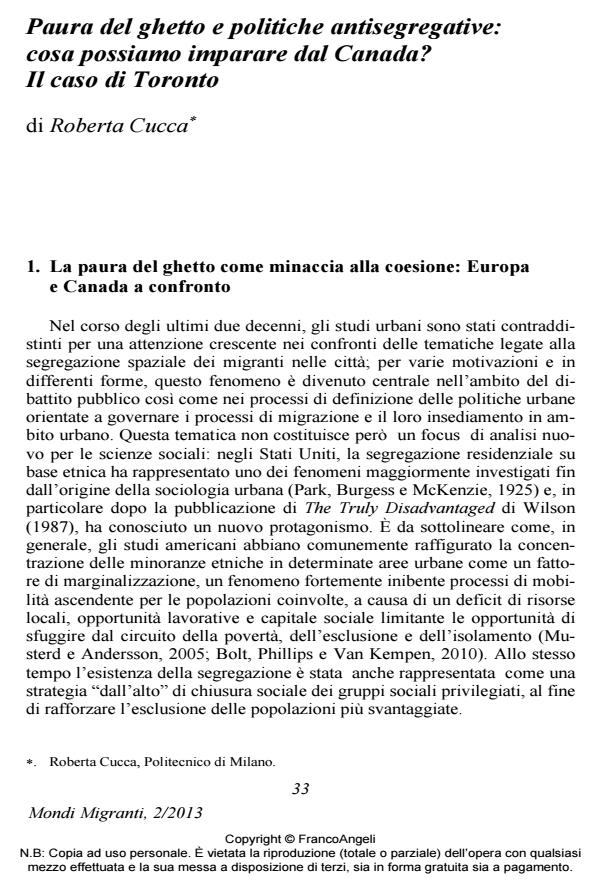Paura del ghetto e politiche antisegregative: cosa possiamo imparare dal Canada? Il caso di Toronto
Journal title MONDI MIGRANTI
Author/s Roberta Cucca
Publishing Year 2013 Issue 2013/2
Language Italian Pages 21 P. 33-53 File size 706 KB
DOI 10.3280/MM2013-002003
DOI is like a bar code for intellectual property: to have more infomation
click here
Below, you can see the article first page
If you want to buy this article in PDF format, you can do it, following the instructions to buy download credits

FrancoAngeli is member of Publishers International Linking Association, Inc (PILA), a not-for-profit association which run the CrossRef service enabling links to and from online scholarly content.
Roberta Cucca, Paura del ghetto e politiche antisegregative: cosa possiamo imparare dal Canada? Il caso di Toronto in "MONDI MIGRANTI" 2/2013, pp 33-53, DOI: 10.3280/MM2013-002003